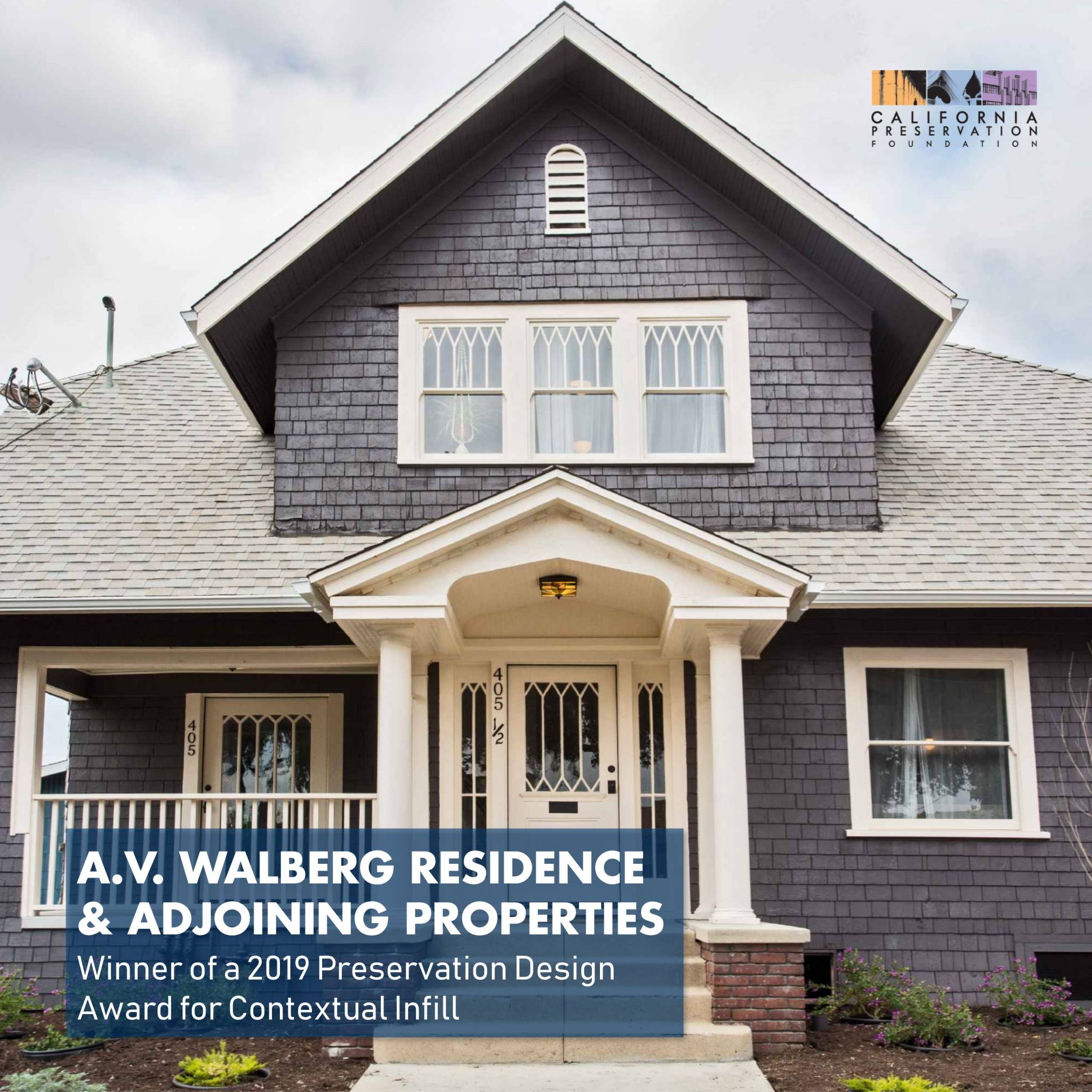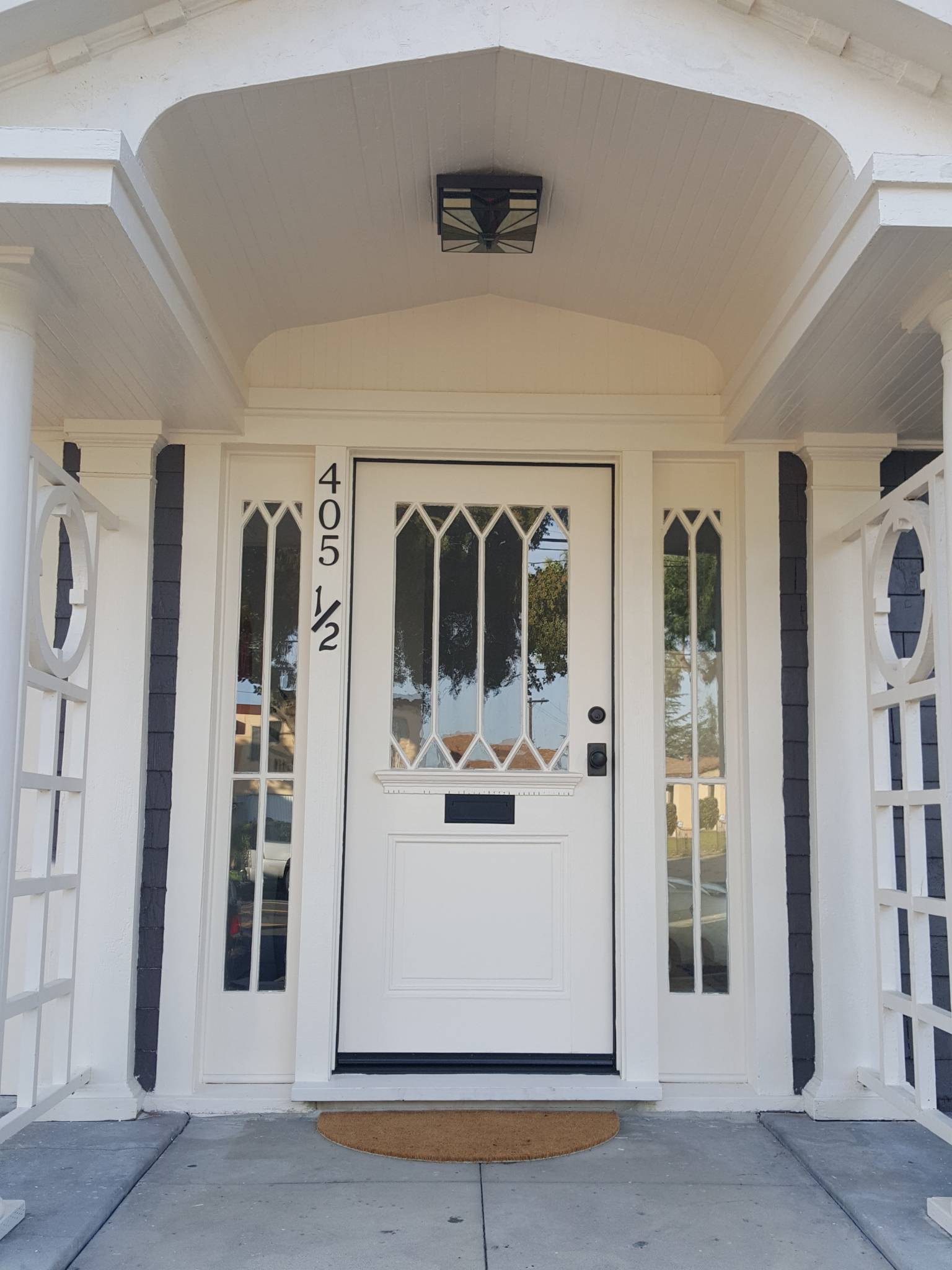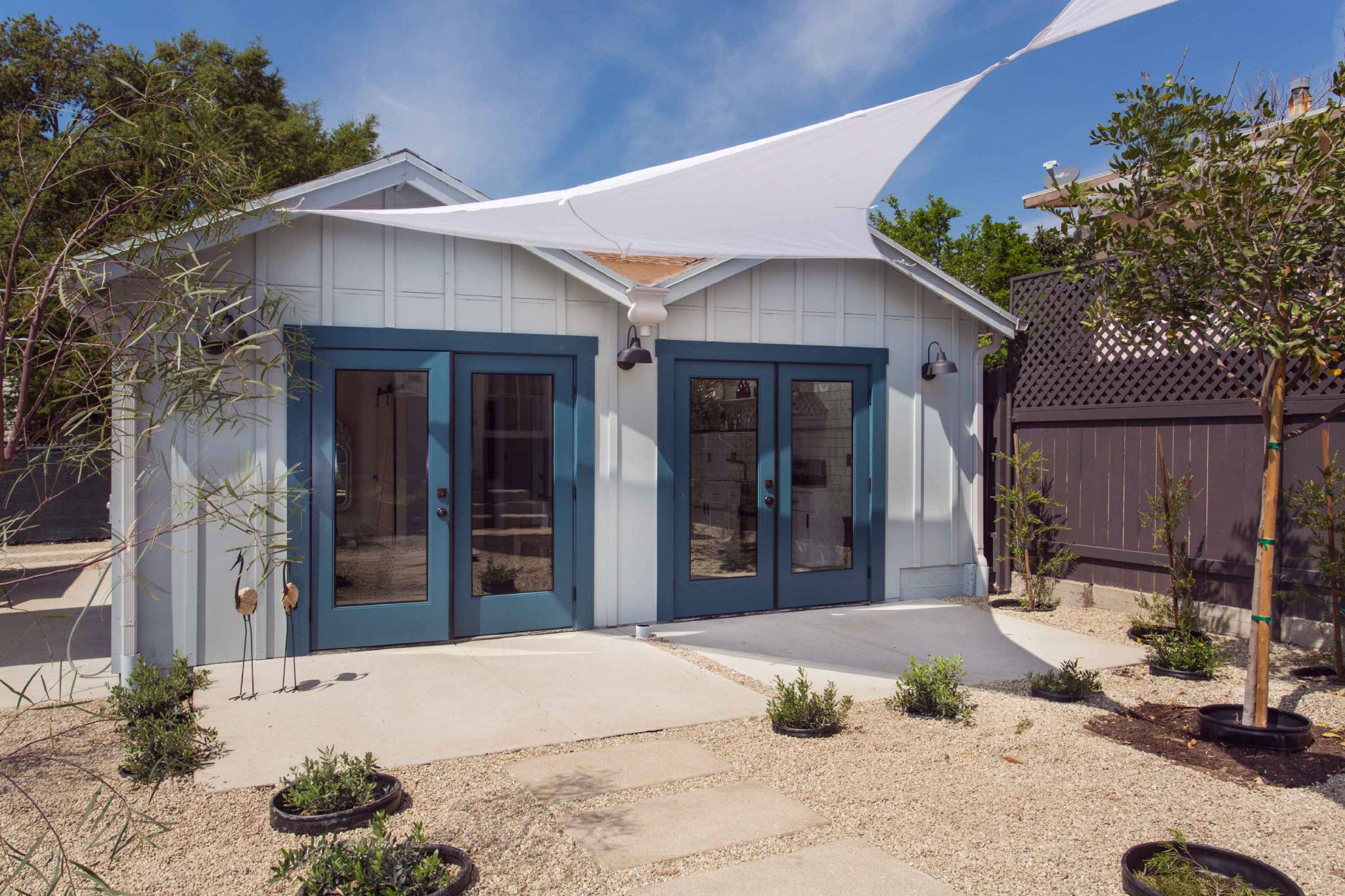California Preservation Awards Sponsorship
To learn about CPF's sponsorship opportunities, including how you can sponsor this page, click here or email us.
About CPF and the Awards
The California Preservation Awards are a statewide hallmark, showcasing the best in historic preservation. The awards ceremony includes the presentation of the Preservation Design Awards and the President’s Awards, bringing together hundreds of people each year to share and celebrate excellence in preservation.
The California Preservation Foundation (CPF), a 501c3 nonprofit, was incorporated in 1978. We now support a national network of more than 36,000 members and supporters. Click here to learn how you can become a member.
A.V. Walberg Residence & Adjoining Properties
The A.V. Walberg Residence & Adjoining Properties in Los Angeles is the winner of a 2019 Preservation Design Award for Contextual Infill and a Trustees Award for Excellence. Award recipients are selected by a jury of top professionals in the fields of architecture, engineering, planning, and history, as well as renowned architecture critics and journalists. In making their decision, the jury noted that the project was a model for increasing housing density in historic districts, stating, “the preservation community should be championing this kind of work. They did a nice job fixing up the old buildings, but that’s not the exceptional part. It’s a model on how to meet the need to provide more housing while respecting the neighborhood.”
The Award will be presented on Friday, October 18, 2019 at a gala dinner and awards ceremony at the InterContinental Mark Hopkins in San Francisco. Tickets and sponsorship options are available at californiapreservation.org/awards.
About this project
As California faces a continuing housing crisis, one thing is clear: we need more housing. We need it in all neighborhoods, in all sizes and we need it soon all across the state. With the 1916 A.V. Walberg Residence and adjoining properties located in Northeast L.A.’s Highland Park-Garvanza Historic Preservation Overlay Zone, the architect and owner sought to develop a project that would add more housing to the property, while also meeting the Secretary of the Interior’s Standards for the Treatment of Historic Properties.
The project employed a mixed approach of rehabilitating a pair of historic homes, adaptively reusing a garage, and constructing new residential infill. Ultimately, the owner and architect successfully turned two single-family homes across three parcels of land into six different residences. The range and flexibility in housing from a granny flat, to a studio apartment, to a single family home broadly supports individuals to multi-generational families. This project can serve as a model for historic neighborhoods across California and demonstrates how we can boost housing density, while preserving historic fabric.
Given the housing crisis in California, as preservationists, we need to do our part and point the way towards increasing housing density in a sensitive way that respects neighborhood character. The A.V. Walberg Residence & Adjoining Properties in Garvanza, a neighborhood in Northeast Los Angeles, demonstrate just that very thing and swiftly met its goals. The project timeline came together quickly because all the dwellings were allowed by right, compared to a previously proposed small lot subdivision with its lengthy planning approval process that had stalled under the previous owner. Parallel tracking the schedule also saved time: Rehabilitation work on the historic homes could commence quickly while the more lengthy Preservation Approval and Plan Check process was underway for new Urban Infill units. For the new owner and architect, a compelling lesson learned was that working WITH the historic fabric instead of against it, as the previous owner did, actually saved the project time and money.
The variety of design approaches uses all the tools in the Secretary of the Interior’s Standards for the Treatment of Historic Properties. From Adaptive Reuse, to Rehabilitation, to Urban Infill with Accessory Dwelling Units in backyards, to carving out attached studio units within existing building footprints. All of these approaches could be adapted to other HPOZ’s and historic districts around California to sensitively add housing while preserving historic fabric.
Photos courtesy of Thom Shelton, Martha Benedict, and Louisa Van Leer.
Project Team
Architect
Louisa Van Leer Architecture
Owner
Good Form Design Build
Other
Garvanza Improvement Association







